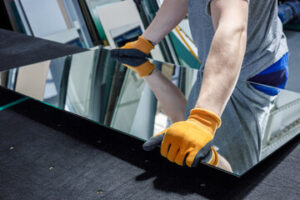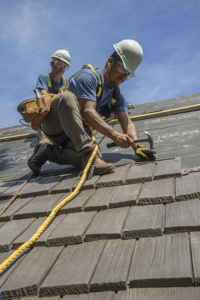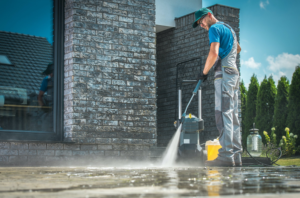Depending on the type of hunt, some hunting essentials may be more valuable than others. But, the importance of having the right gear can’t be overstated.

Consider adding cloth game bags to your hunting backpack to protect harvested animal quarters. And, pack a flashlight for improved visibility in the dark and a poncho for rainy conditions. Read on Turkey Call Box for more information.
Camouflage can be an important tool in a hunter’s arsenal, but its usefulness depends on the species and environment in question. For example, waterfowl hunting in marshes requires a different strategy from a buck hunt in open grasslands. Traditional camo patterns use earth tones and shading to mimic the colours of bushes, trees and leaves. Brands like Realtree and Mossy Oak are among the most popular in this genre.
When hunting ungulates (like deer) in wooded areas, it is a good idea to wear camo. These animals have a better ability to see colour than humans, which can be an advantage when concealing yourself from them. Choosing camo that uses dark tones, especially when hunting from elevated positions like a treestand or a blind, is also helpful.
In general, camouflage isn’t about making you invisible to your quarry (that would be Houdini-level stuff). Instead, it breaks up your outline and helps you blend with your surroundings so that you can remain undetected. You should also consider local hunting regulations and requirements, as these may require that you wear blaze orange for safety reasons.
Knife
A good knife is the most important tool that any hunter can own. It serves many vital functions, such as removing skin and internal organs from the hunted animal. It also comes in handy for other outdoor tasks like cutting rope, cleaning vegetation, and starting fires.
A hunting knife can have a plain edge, serrated edge, or combination of both. A plain edge provides precision and control, while a serrated blade has greater cutting power. You should choose the knife that suits your needs and the conditions you expect to encounter in the field.
In addition to a standard blade, you should have a dedicated skinning knife in your collection. This type of knife has a thin and sharp blade to make the process of skinning an animal much easier.
You can also find knives with a gut hook, which is a special notch ground into the spine to allow hunters to open the hide of animals without puncturing the entrails. A gut hook is particularly useful when you are field dressing a large animal.
Compass
Modern hunters have many navigation electronic devices at their disposal, but a basic compass can still be a very valuable tool. Having a good map and knowing how to use a compass can save you from getting lost in the wilderness.
The best compass for hunting is one that has a magnetic needle and baseplate (a flat transparent plate that acts as a ruler to measure map distances). It should also have an adjustable declination adjustment, sighting mirror, and clinometer.
For most hunters the simplest method of using a compass is to find the direction from your campsite or vehicle to the place you wish to go. This is accomplished by orienting the map, then taking a bearing from the map’s north-south lines to the compass’s orienting arrow.
Another compass technique is to identify a baseline like a river, road, or trail. Once you have found your way back to this point, it is easy to navigate to your camp or other landmarks. This is the most reliable technique for keeping track of where you are in unfamiliar territory.
First Aid Kit
A first aid kit is a bag, box, or pack containing supplies used to give immediate medical treatment to an injured or sick person until full medical assistance and emergency services are available. The contents of first aid kits vary widely depending on the knowledge and experience of those who put them together, as well as local medical requirements. Medications and ointments often have expiration dates, so it’s a good idea to check and replace them regularly.
If you’re not familiar with how to use the items in your first aid kit, consider taking a formal course. This will ensure that you know what to do in the event of an accident and will be able to provide fast, life-saving care.
Keep a basic first aid kit at home and a travel kit in your car or suitcase. You can buy prepackaged first aid kits, or you can build your own with a checklist as a guide. Be sure to tailor your first aid kit for different circumstances, such as camping or hiking, by adding specific items, like sun lotions or Paracetamol for kids.
Water
Water is crucial to life, and it can also be a significant hunting attractant. However, not all water sources are created equal. For example, a cattle pond might draw deer in the day, but not at midnight when bucks are moving back to bedding areas.
It’s important to know where deer are most likely traveling and feeding and to target those locations with a well-placed water source. To do that, hunters can scour onX for potential water sources on public land they are about to hunt. This can help them figure out if the pond, creek or lake they want to target will be an attractive destination for bucks.
Sturgis recommends hunters bring two to four quarts of water per day for hydration. This is more than enough to last a couple of days in cool weather but not so much that it weighs hunters down or makes them thirstier than they would be without it. He also advises hunters to use a squeeze style filter that attaches to their backpack. This makes the most efficient use of available space and provides purified drinking water in seconds.
Sleeping Bag
A sleeping bag is a vital piece of equipment for any outdoor adventurer. Whether you’re backpacking through Yosemite or camping in your backyard, a good sleeping bag can keep you warm and comfortable at night.
When choosing a sleeping bag, it’s important to consider your needs and climate conditions. For example, if you’re planning on camping in cold weather, it’s essential to look for bags that are rated to withstand the temperatures you expect to encounter.
Another thing to remember is that sleeping bag temperature ratings are only an average, and not the lowest or highest you can sleep in. To get the most accurate sense of how warm or cold a sleeping bag will be, you should test it out first hand.
You’ll also want to take into consideration the shape of the bag and its dimensions, including hip girth (which varies between men’s and women’s bags). Lastly, consider getting a sleeping bag liner, which is similar to a blanket you can place inside your bag to add warmth and comfort.
Food
Hunting requires physical stamina and sharp mental focus – both of which are fueled by food. Whether you’re perched in your tree stand or trekking through rugged terrain, it’s important to have a good supply of sustenance to ensure you stay energized and healthy throughout the expedition.
A good option is jerky, which provides plenty of protein and fat to keep you satiated while on the go. You can also pack summer sausage, which is high in protein and keeps well without refrigeration. For carbs, pack granola bars or wheat thins to pair with your jerky for a delicious, energy-boosting snack.
Water, fire and safety supplies are essentials to carry on any hunting trip. Consider packing a water purification tablet, windproof matches or a firesteel, a small shovel and a personal water filter (like a LifeStraw) to get you through any emergency situations. It’s always a good idea to bring bear spray and a survival blanket for additional safety precautions. While these items may seem small, they can be crucial in the case of an accident or unexpected situation.



